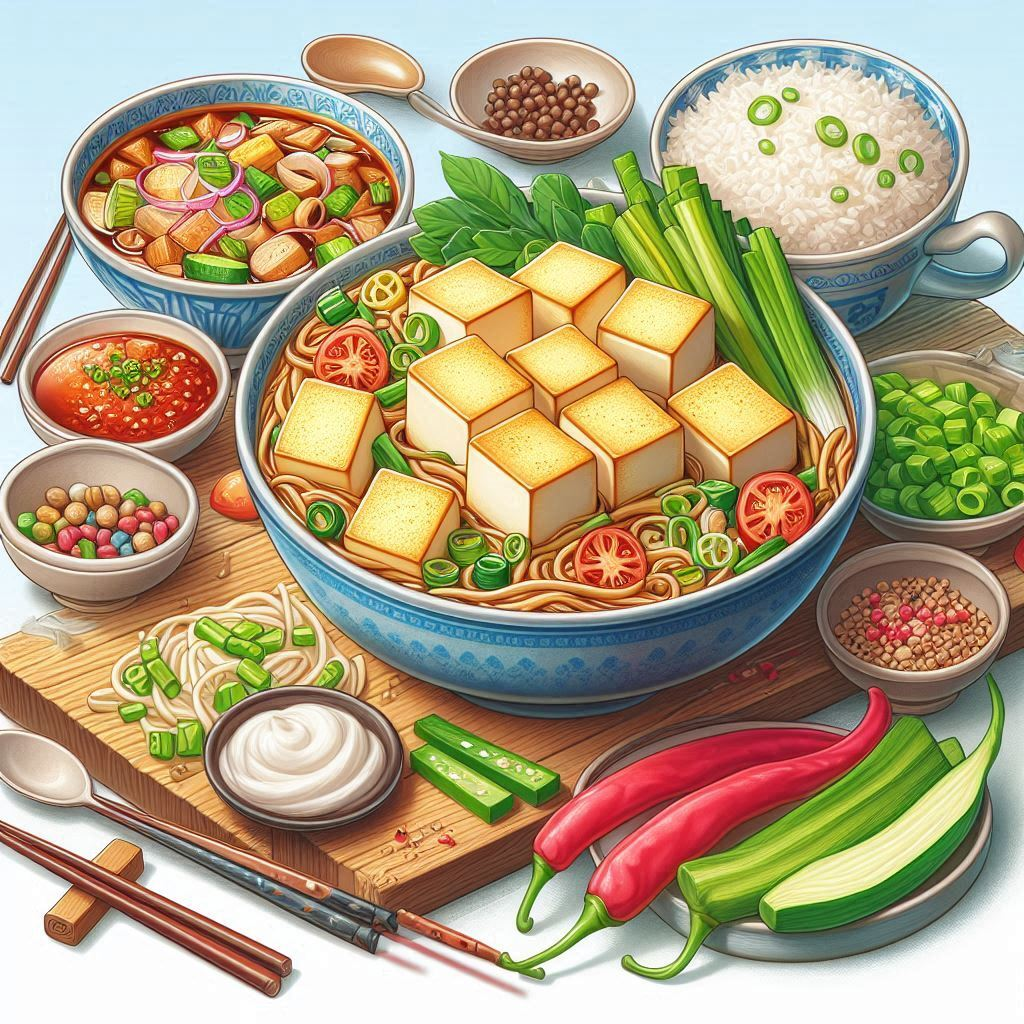
A Journey Through Time: Unraveling the History and Preparation of Mapo Tofu
Mapo Tofu, a seemingly simple dish of silken tofu bathed in a fiery, savory sauce, is a culinary masterpiece that has captivated taste buds for centuries. Its origins lie in the bustling streets of Sichuan, a province in southwestern China renowned for its bold flavors and spicy cuisine.
The Tale of a Humble Dish:
The exact origins of Mapo Tofu are shrouded in the mists of time, but the most popular story centers around a woman named Chen Xulian, who lived in the Qing Dynasty (1644-1912) in the town of Chengdu, the capital of Sichuan. Chen, affectionately known as “Mapo” (meaning “pockmarked” in Chinese), ran a small eatery with her husband.
Legend has it that Chen, despite her limited resources, created a dish that was both delicious and filling, using tofu, a readily available ingredient, and a spicy sauce made with ground Sichuan peppercorns, fermented black beans, and chilies. This dish, which she named “Mapo Tofu,” quickly gained popularity among locals, becoming a staple of Sichuan cuisine.
The Evolution of a Classic:
Over the years, Mapo Tofu has evolved, with chefs adding their own twists and variations to the original recipe. Today, there are numerous variations of Mapo Tofu, each with its own unique flavor profile. However, the core elements of the dish remain the same: silken tofu, a spicy and savory sauce, and a hint of umami.
The Art of Mapo Tofu Preparation:
Preparing Mapo Tofu is a delicate dance between heat, flavor, and texture. Here’s a detailed guide to crafting this iconic dish:
Ingredients:
- Tofu: Silken tofu is the preferred choice for Mapo Tofu, as it has a smooth, delicate texture that absorbs the flavors of the sauce beautifully.
- Sauce: The heart and soul of Mapo Tofu lies in its sauce. The key ingredients include:
- Ground Sichuan Peppercorns: These peppercorns impart a unique numbing sensation and a complex aroma that is characteristic of Sichuan cuisine.
- Fermented Black Beans: These beans add a savory, umami depth to the sauce.
- Chilies: The type and quantity of chilies used will determine the level of spiciness.
- Soy Sauce: Adds a salty and savory flavor.
- Sugar: Balances the spiciness and adds a touch of sweetness.
- Ginger and Garlic: Provide a fragrant base for the sauce.
- Chicken or Pork Broth: Adds richness and depth of flavor.
- Other Ingredients:
- Ground Pork or Beef: Optional, but adds a meaty element to the dish.
- Scallions: Add a fresh, pungent flavor and garnish the dish.
- Sesame Oil: Adds a nutty aroma and richness.
Preparation:
- Prepare the Tofu: Cut the tofu into cubes and gently press out excess water. This will help the tofu absorb the sauce better.
- Make the Sauce: In a wok or large skillet, heat oil over medium heat. Add ginger and garlic and sauté until fragrant. Add ground pork or beef and cook until browned. Add the fermented black beans, chilies, and Sichuan peppercorns and cook for a few minutes, stirring constantly. Add soy sauce, sugar, and chicken or pork broth and bring to a simmer.
- Cook the Tofu: Add the tofu cubes to the sauce and cook until heated through, being careful not to break them.
- Thicken the Sauce: If desired, add a cornstarch slurry to thicken the sauce.
- Serve: Ladle the Mapo Tofu over steamed rice and garnish with chopped scallions and a drizzle of sesame oil.
Tips for Success:
- Use high-quality tofu: Silken tofu is the best choice for Mapo Tofu, but if you can’t find it, you can use firm tofu, but be sure to press it well to remove excess water.
- Don’t overcook the tofu: Overcooked tofu will become tough and rubbery.
- Adjust the spiciness to your liking: You can add more or fewer chilies depending on your preference.
- Serve immediately: Mapo Tofu is best enjoyed fresh, as the tofu will absorb the sauce and become soggy if it sits for too long.
Beyond the Plate:
Mapo Tofu is more than just a dish; it’s a cultural icon, a symbol of Sichuan’s culinary prowess and a testament to the ingenuity of its people. The dish has transcended borders, becoming a global favorite and inspiring countless variations and reinterpretations.
So, the next time you savor a bowl of Mapo Tofu, take a moment to appreciate its rich history and the culinary artistry that went into its creation. It’s a dish that has stood the test of time, a testament to the power of simple ingredients and bold flavors.



